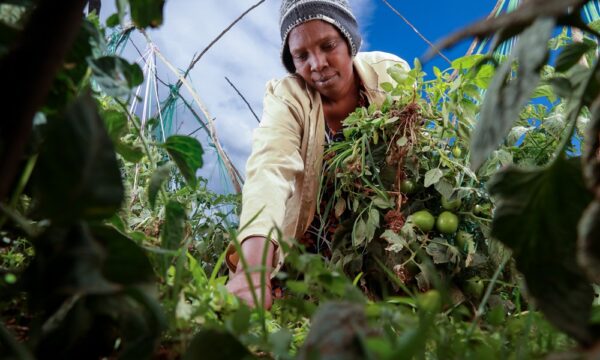
As COP27 continues this week, adaptation is high on the agenda, writes Jonny Casey, CABI’s Climate Change Manager. How can smallholder farmers adjust their practices to adapt to higher global temperatures? A key topic is inclusive, locally-led adaptation approaches to landscape governance. This is a vital component of resilience-building, which CABI has championed through initiatives such as the Woody Weeds project in Eastern Africa.
This project supports communities to collectively tackle land degradation caused by invasive plants such as Prosopis juliflora, which is considered one of the world’s most invasive and threatening weeds. The project helps to build local adaptive capacity to restore ecosystem services and regenerate native grasslands, which are vital to coping with climate impacts.
Landscape governance and woody weeds
Inclusive landscape governance is a holistic approach for protecting the environment. It brings together people with a stake in the stewardship of shared areas of land. This includes farmers, pastoralists, businesses, local government, scientists, and tourism companies. Coming together enables communities to collaborate and find workable solutions and understand the natural resource needs of different people and sectors.
Many exotic woody weeds – shrubs and trees – have been introduced into Africa. Over time, they’ve become destructive invasive species. They reduce native biodiversity and limit the livelihoods of those living in rural communities. CABI aims to limit these impacts in Eastern Africa by generating and sharing knowledge on their effects and finding safe ways to control them and identify the incentives to improve landscape regeneration.
The threat of woody weeds like prosopis on grasslands
Take Prosopis juliflora for example. It grows far and wide across Eastern Africa. This is possibly why it’s known by so many names. In Kenya, it’s called ‘Mathenge’ while in the Baringo County of Kenya, its name is ‘Promii’. In Ethiopia, it’s known as Devil Tree. And in Tanzania, it’s called ‘Mrashia’.
Grasslands in East Africa are under severe threat from Prosopis invasions. In Ethiopia’s Afar region, the weed has invaded 1.3 million hectares within 35 years and consumes half of the available water resources in the region. This is over 14% of the region’s total area, and it’s likely to continue spreading. In Baringo County, Kenya, prosopis has caused the disappearance of over 30% of native grasslands. This has negative impacts on biodiversity. It also affects the livelihoods of pastoralists who rely on the grasslands for rearing livestock. But it also has implications for climate change.
Woody weeds and climate change
Over the past years, CABI has researched the link between woody weed invasions and climate change. Grasslands comprise 40% of the Earth’s natural vegetation. These areas of valuable biodiversity contain a large amount of the world’s soil organic carbon (SOC), the most crucial carbon pool in terrestrial ecosystems.
When weeds like prosopis invade large areas of grassland, they impact SOC. A 2020 paper revealed that the degradation of grasslands in Baringo County, Kenya, has led to a loss of around 40% of SOC.
In contrast to encroachment by Prosopis juliflora , the research demonstrated that the restoration of grasslands in tropical semi-arid regions can both mitigate the impacts of climate change and restore key benefits usually provided by healthy grasslands for pastoralists and agro-pastoralist communities. Contrary to a widespread belief that carbon storage is related to tree cover, healthy grasslands can store similar amounts of carbon as forests. The carbon stored in grasslands is found below-ground, which makes it less vulnerable to wildfire.
Managing woody weeds to protect grasslands
CABI’s Woody Weeds project has helped local communities take a landscape approach to the threat of prosopis. It’s helped them learn new skills to adapt and restore ecosystems. Managing invasive plants like prosopis can help to repair the invaded ecosystems and protect uninvaded ecosystems from becoming invaded in the future. Controlling invasive woody shrubs can also help pastoralists whose livestock rely on healthy grasslands for food.
Addressing invasive plant species can help us to protect grasslands – ecosystems that are valuable not only in the fight against climate change but also to the rural communities that rely upon them for food and ultimately their livelihoods.
Read CABI’s publications on climate change here.
Related News & Blogs
Biodiversity loss: How can we reclaim our landscapes from threats to biodiversity?
On 22nd May, we mark the International Day for Biological Diversity. In this article, CABI’s Global Director for Invasive Species Dr Hariet Hinz looks at how we can reclaim our landscapes from threats to biodiversity. Biodiversity loss is proceeding at…
22 May 2025




